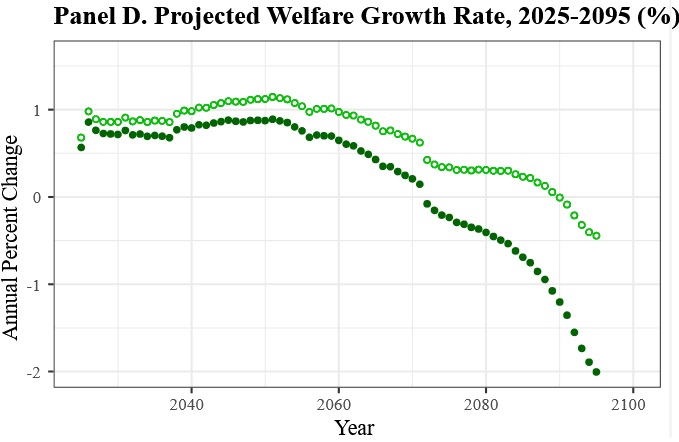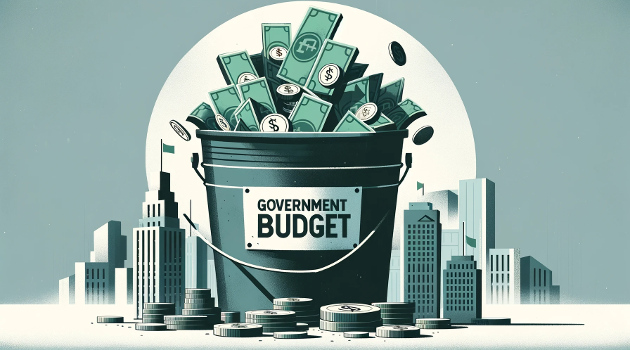Last year, I filled out a do-it-yourself federal budget prepared by the Washington Post and another one put together by the Committee for a Responsible Federal Budget.
In both cases, my main complaint was that they did not give enough options to shut down counterproductive departments and/or offer enough proposals for much-needed entitlement reform.
Today, I’m going to write about a do-it-yourself budget from the American Enterprise Institute. But I’m not going to bother to share my results because I think the model has a fatal flaw.
To illustrate, here is the model’s baseline estimate for national well-being (in this case, “welfare” refers to the overall prosperity of the nation rather than redistribution spending). As you can see, the model assumes that national well-being eventually begins to shrink if we leave government policy on autopilot.

Because the burden of government spending is projected to dramatically increase in coming decades, I don’t have any problem with the assumption that living standards will begin to decline.
After all, if America becomes a European-style welfare state, it’s perfectly reasonable to expect European-style economic malaise.
But here’s where things go awry. To show how the model is messed up, I made these two choices.
- The biggest-possible increase in income taxes.
- The biggest-possible increase in payroll taxes.
I then clicked “run model” and here are the results. In every single year, it shows that national well-being improves with these two big tax increases.

Before explaining how and why this is wrong, here is an explanation of the model’s methodology.
In our October 2023 working paper, we…explain, justify, and show the results of our macroeconomic projection model of the U.S. economy and federal budget. …As a companion to our working paper, we have developed a dashboard which allows users to adjust assumptions and implement their own policies to reduce future levels of debt and improve welfare for generations to come. By adjusting the sliders on the left-hand side of the screen, users can, e.g., increase income taxes, increase levels of investment, reduce Social Security benefits, and change projected health care elasticities. …Users can adjust various assumptions or implement policy changes using the sliders on the left, then click “Run Model” to produce new projections using this new set of assumptions. For example, to reduce deficits, one could increase income and Social Security payroll tax rates by one percentage point each, cut non-health federal spending by ten percent, and increase the average Social Security replacement rate by five percentage points. New projections after making these changes are shown… The solid circles continue to show baseline assumptions while the empty circles represent outcomes under the new set of assumptions.
So why does the modal produce screwy results?
Here’s what you need to know.
…welfare improves as, in our model (based on assumptions made by CBO), deficits crowd out investment, reduce capital, and slow economic growth, so efforts to reduce the deficit will generally improve welfare.
There is nothing wrong with that bit of analysis, but it’s fatally incomplete.
It fails to account for how tax increases would negatively impact national well-being. And it also fails to account for how a rising burden of government spending will adversely impact national well-being.
To put it in simple terms, projecting the economy based solely on what happens to deficits and debt is like predicting the outcome of a baseball game by looking at what happened in the 2nd inning. That’s part of the answer, but grossly inadequate.
Which is an analogy I should have used in this video from 2009, which explains that spending is the problem, not red ink.
If you don’t want to spend a few minutes with the video, this short column tells you why fixating solely on deficits leads to absurd results. And this column is a must-read for people who think tax-financed spending somehow is less harmful than debt-financed spending.
P.S. I write about “Fiscal Fights with Friends” when I think someone is well meaning but is pushing bad policy or bad analysis. Previous editions have focused on Medicaid reform, tax increases, parental leave, the value-added tax, fiscal policy, the flat tax, and the carbon tax (twice).


